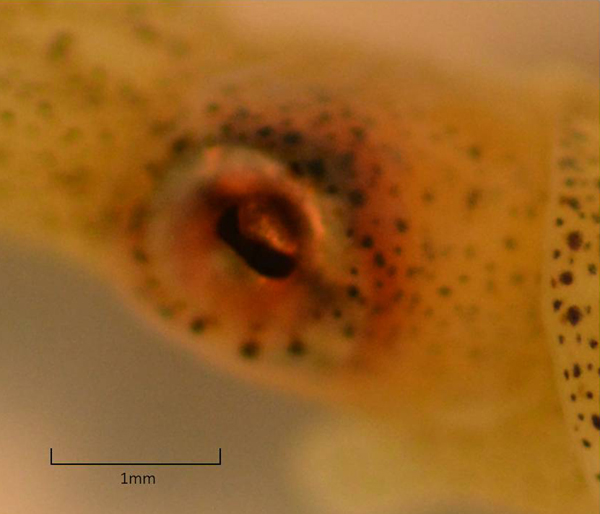Sensory Systems
There is a diverse array of sensory organs found in the cephalopods including, but not limited to, eyes and photoreceptors, mechanoreceptors and chemoreceptors (Nixon and Young 2003; Ruppert et al. 2004).
The eyes of coleoid cephalopods are sophisticated and most have a cornea, iris, pupil and retina that are remarkably similar to those of fishes, an example of convergent evolution between the two groups. Many cephalopods also have other light sensitive structures that resemble simple eyes and are used to detect the intensity of light (Ruppert et al. 2004). Cuttlefish, Sepia officinalis, are known to have only a single visual pigment on their retina, meaning they cannot see in colour, and experiments have confirmed that they, like many other cephalopods, are colour blind (Mäthger et al. 2006). Cephalopods are however able to detect the polarisation of light and because they are also able to produce polarised light from their skin (see Integument tab), it is thought that this may be used as means of intraspecific communication (Mäthger et al. 2009) (see Life History and Behaviour tab).
|

|
|
The eye of I. notoides (with scale bar) showing the slit-shaped pupil and reflection from the iridiocytes in the skin surrounding it.
Photograph by Samantha Reynolds.
|
Cephalopods have a mechanosensory system that has similar functions to those of the vestibular (inner ear and lateral line) system seen in vertebrates. The statocysts of cephalopods perform the same role as the inner ear of fishes. In coleoids, these are large and are found on each side of the braincase, in the optic capsules. The statocyst is a cavity that contains a central statolith which is able to move around in response to movements by the animal. The statocyst is lined with ciliated cells that detect the movement of the statolith and provide information on body orientation in relation to gravity and angular acceleration (Ruppert et al. 2004). In I. notoides the statoliths are calcareous and have been used to estimate age and extrapolate growth rates, lifespan and maturation of this species because of the periodicity of growth increments in the statolith (Tracey et al. 2003) (see Reproduction and Development tab). The statoliths of I. pygmaeus, a close relative of I.notoides, are known to show daily growth increments (Jackson 1989), and because of the similarity of the two species it is assumed that this holds true for I.notoides as well (Tracey et al. 2003). |